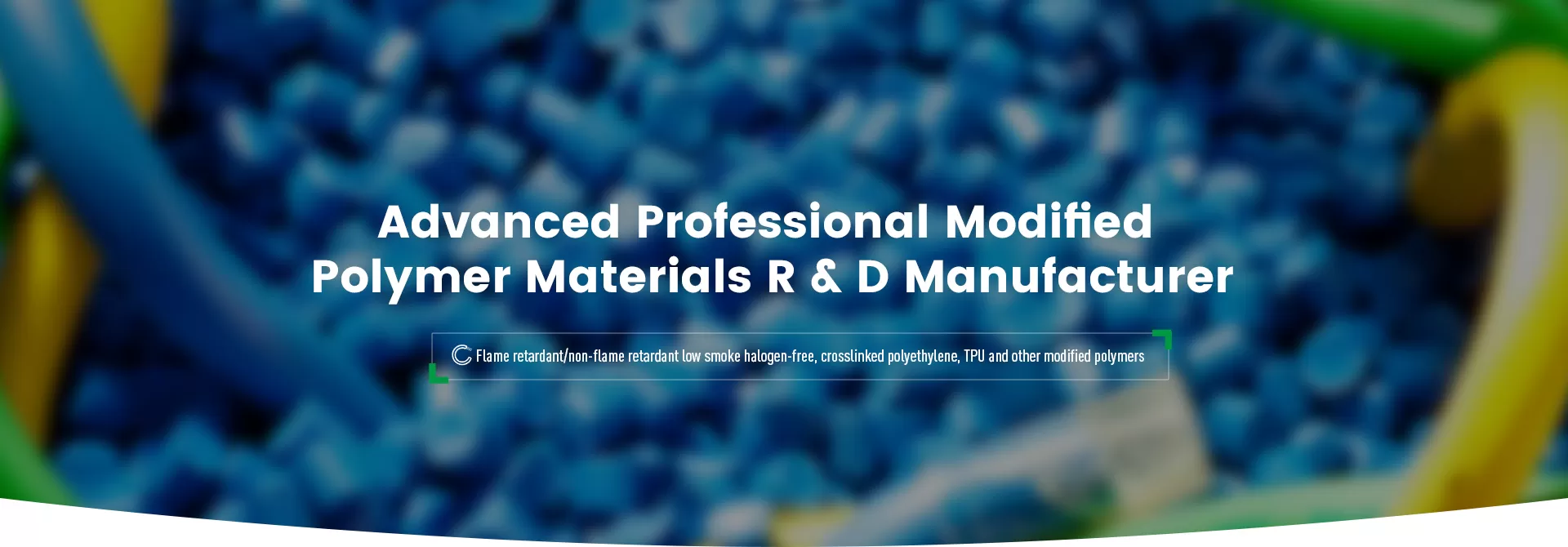
XLPE (Cross-linked Polyethylene) Electric Cable Compounds play a vital role in the structure of wires and cables. They are mainly used in two key structures: insulation layer and sheath layer. Both types of materials are based on polyethylene and have similar formulation designs, but there are fundamental differences in performance requirements and core functions.
Core function: ensure electrical insulation between internal conductors and between conductors and the earth, prevent current leakage, and ensure safe and efficient power or signal transmission.
Performance focus:
Electrical performance first: extremely high volume resistivity, excellent dielectric strength (breakdown field strength), low dielectric constant and dielectric loss tangent value to minimize energy loss and signal distortion.
Stable thermal performance: good long-term heat resistance (such as 90℃, 105℃ grades), small thermal deformation, ensuring stable insulation performance at operating temperature.
High purity: strictly control impurities and defects to avoid the formation of electric field concentration points that lead to local discharge or even breakdown.
Precision cross-linking structure: highly uniform cross-linking is achieved through chemical or physical methods (peroxide, silane, irradiation), greatly improving heat resistance, mechanical strength and resistance to environmental stress cracking.

Core function: provide physical protection and environmental barrier for the internal structure of the cable (conductor, insulation, shielding, etc.).
Performance focus:
Mechanical protection: excellent tensile strength, wear resistance, impact resistance, and compression resistance, to resist pulling, friction, extrusion during installation and laying, and mechanical stress during operation.
Environmental resistance: outstanding weather resistance (anti-ultraviolet, ozone), chemical corrosion resistance (oil, acid, alkali, etc.), water resistance (low water absorption), flame retardancy (especially important). Some scenarios require high or low temperature resistance.
Flexibility and processability: good flexibility facilitates installation while ensuring smooth extrusion processing.
Flame retardant properties: In crowded places such as buildings and rail transit, halogen-free low-smoke flame retardant (LSZH) sheathing materials are mandatory requirements to reduce the spread of toxic smoke and flames during fires.
Power cables: The insulation layer of medium and high voltage (1kV to 500kV) power cables is mainly produced using XLPE electric cable compounds.
Building wiring cables: Low voltage (1kV and below) building wiring cables (such as YJV, WDZ-YJY, etc.) are mainly produced using XLPE electric cable compounds.
Cables with extremely high or special requirements for insulation performance, such as marine cables, cables for nuclear power plants, and high-frequency communication cables (special formulas), are mainly produced using XLPE cable compound insulation.
Direct buried cables, pipeline laying cables, tunnel cables, and other cables that need to resist soil pressure, moisture, chemical corrosion, etc., mainly use XLPE sheathing materials.
Overhead cables (usually combined with insulation or as an outer sheath), solar photovoltaic cables, etc. mainly use XLPE sheathing materials.
Building wiring (WDZ-YJY, etc.), subways, railway stations, hospitals, high-rise buildings, etc. are required to use halogen-free low-smoke flame-retardant (LSZH) XLPE sheathing materials to ensure low smoke and non-toxicity in the event of a fire and delay the spread of fire.
Behind the continuous upgrading of cable performance, Angreen is a professional Electric Cable Compounds Inc.
We focus on: Accurately design and optimize the formulation of insulation and sheathing materials according to cable type (power, communication, special), voltage level, application environment (temperature, flame retardant, chemical resistance, weather resistance), international and domestic standards (IEC, GB, UL, etc.).
Customized production: Provide customized electric cable compounds solutions that meet specific customer or project needs.
Strict quality control: Ensure that the performance of each batch of compounds (electrical, mechanical, flame retardant, aging, etc.) is stable and reliable and meets standard requirements.
Technical support: Provide technical support for cable manufacturers on material selection and processing technology (such as extrusion temperature and speed).